
In the early 1890s, the Brooklyn Navy Yard was overrun with rodents. Almost all the docks in the yard were in need of repair where they had been gnawed by the rats, and the losses in rigging, spare sails, and other wares were also great.
Unfortunately, there was not one cat to be found during this time period. To be sure, plenty of kittens had been born at the yard over the years, but kittens and their mama cats were all quickly scooped up by sailors who thought cats brought good luck to ships at sea (in fact, Tom, the famous cat of the U.S.S. Maine, was born at the Brooklyn Navy Yard around 1885).
Officials tried traps and poisons, but the rats simply made a sport of the traps and got fat on the poisoned food. They even brought in some dogs, but the canines were no match for the clever and ferocious rats – more often then not, the dogs would tear of out the yard in terror whenever they encountered the rodents.
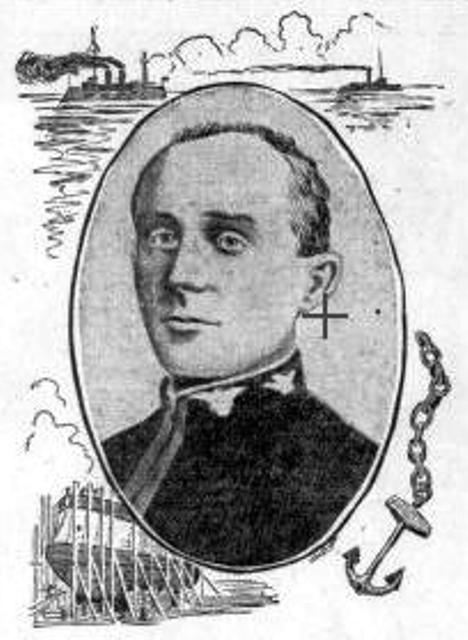
But sometime around 1893, a few landlubber cats entered the Brooklyn Navy Yard, and, discovering the large rodent population, decided to hide from the sailors and stay in place rather than go out to sea. Soon the rats and mice began to disappear. By 1900, there were more cats than rodents.
The Rear Admiral’s Cat Orders
In November 1900, President William McKinley announced his decision to appoint Francis Tiffany Bowles to the position of Rear Admiral, Chief Constructor of the Navy. One month later, Bowles, who had previously been in charge of the Brooklyn Navy Yard, told the men under him that they were not to hurt or interfere with any of the cats that prowled in the yard.
After all, the cats did not cost the government a penny — they were fed scraps of food saved for them at the various shops as soon as the bell rang at noon – and in return, they saved the United States government thousands of dollars a year by keeping the rats and mice away from the sheds and shops.
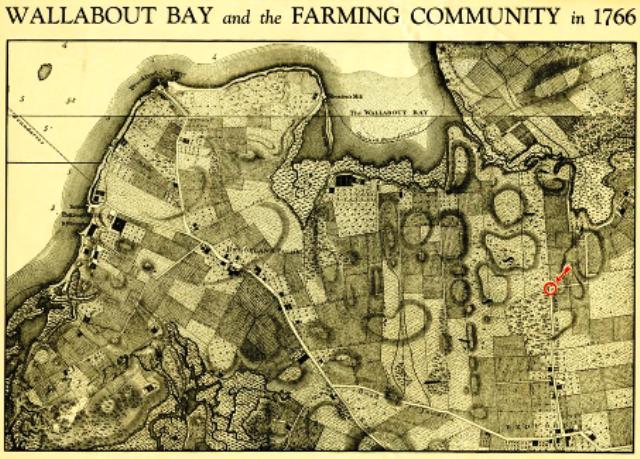
A Brief History of the Brooklyn Navy Yard
The New York Naval Shipyard, more popularly known as the Brooklyn Navy Yard, is located on the Wallabout Bay, which takes its name from a group of French-speaking Walloons from Belgium who settled on the waterfront in the mid-17th century. One of the first settlers was Joris Jansen Rapalje, a Walloon tavern-keeper, who, in 1637, purchased about 335 acres of land and established a farm in the vicinity of the inlet called Waal-bogt Bay.
Following the American Revolution, around 1791, shipbuilder John Jackson and his brothers acquired a 100-acre crescent-shaped tract from the Commissioners of Forfeiture. The land included mud flats and the Remsen Mill property, where the bodies of dead American soldiers had been hastily interred during the war.

Taking advantage of the existing dock on the property, the Jacksons built their own small shipyard and about ten houses for their workers. In 1801, the Jacksons sold the 42-acre shipyard to the United States government for forty thousand dollars.
Five years later, the property became an active U.S. Navy shipyard. The yard expanded in 1824, when the government purchased an additional 35 acres along Flushing Avenue for a naval hospital and cemetery (I guess they didn’t have much faith in their hospital?), which was completed in 1838.
Within the western half of the Brooklyn Navy Yard, the government constructed the Commandant’s Quarters (Quarters A) and several brick storehouses, shops, foundries, and offices. Later, near the time of the Civil War, residences for naval officers were built at the corner of Flushing Avenue at Navy Street (Admiral’s Row). Check out this 3-minute video from the Municipal Art Society of New York on Admiral’s Row or take a photographic tour of the abandoned homes.
By 1900, when this tale of the black cats takes place, the yard comprised just over 112 acres.
The Veteran Ratters of the Brooklyn Navy Yard
In 1900, the two veteran cats of the Brooklyn Navy Yard were Tom and Minnie. These two black cats did their policing in the electrical building, where large quantities of oiled silk and other insulating materials were stored. The rats were quite attracted to these materials and would often gnaw on them before Tom and Minnie came to town.
Tom was a very large cat, while Minnie was not much bigger than a kitten and the smallest working cat in the yard. Despite her size, Minnie was the best ratter in yard – in fact, one workman said she was probably the best ratter in the world.
Minnie had full run of the machine rooms, and knew how to protect every wheel and strap. She’d dodge among the whirling belts and wheels in hot pursuit, and could tackle rats as big as herself. She could jump up to eight feet, and once jumped down an entire flight of stairs and landed right on a rat’s back. As one workman noted, “She deserves a gold medal for preserving the property of the United States government.”

The Ratters of the Rigging Loft
Jerry, the oldest cat in the yard, arrived soon after Tom and Minnie in 1893. He was partners with George Dewey, who came to the yards in 1897. The two felines were responsible for patrolling the rigging loft in Building 8 on Chauncey Avenue, which had at one time been infested with rats and mice who did tremendous damage to the rigging.
George and Jerry worked alongside master sail maker William L. Cowan, a veteran of the Navy who served with the Potomac Squadron during the Civil War. William Cowan was a personal friend of four U.S. Presidents — Lincoln, Grant, Arthur, and Cleveland — and a member of the Paraguay Expedition of 1858. He took charge of the sail-making department at the Brooklyn Navy Yard in 1889 after Commodore George Dewey (no relation to the cat!) ordered that every ship repaired at Brooklyn have her sails made there also.
According to William, once George and Jerry went on the job, the loft was free of rodents, and he no longer had to worry about them running over his feet or trying to run up his pants. “You have no idea of the change that has taken place there,” Cowan told a reporter from The New York Times. “The mice used to be awful. They were so bold and fearless that they would come scampering over our hands while we were working at the rigging here.”
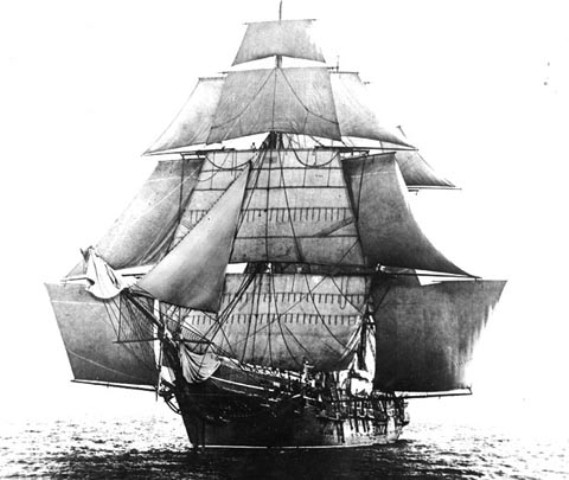
Jerry had a habit of taking long trips away from the Navy Yard on his own about once a month, but he always returned and worked overtime when the mice started to show up again in the rigging loft (I guess George couldn’t handle them all on his own.)
One time the cat was taken against his will by one of the workman who wanted to domesticate him at his home – he wasn’t about to be a house cat, and returned to the Navy Yard the next day. (Some feel he must have followed the sound of the bell tolling.)
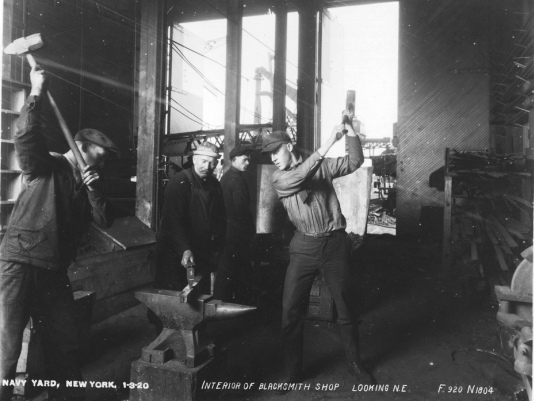
The Republican Cat of Carpentry
J.A. Cook, a workman in the ship carpenters’ department, also had a cat which he named Joan of Arc. According to Cook, Joan of Arc was a Republican feline who came from Omaha – but she could smell a rat just as quick as a Democrat. The workmen in this shop said they could set their watches by her, as she showed up every day at 11:55 a.m. to get some scraps of food and milk.
Lessons in Rat Catching
Jennie was a tortoise-shell cat who was employed in Building No. 20, the iron plating shop, where she worked with her owner, Bob Duke, in the construction and repairs department. She was the expert ratter in residence, who taught all her kittens the skills they needed to get their mouse. Jennie had kittens about every three months, and most of them were taken all over the world by the sailors that had adopted them as ship mascots.
Before they headed to sea, Jennie would give each kitten lessons in rat catching. She would do this by depositing a dead mouse on the floor and then carrying one of the kittens to the dead rodent. She get into a crouching position at some distance from the mouse, pounce upon it with a sudden spring, and growl fiercely. After repeating these steps several times, she would step aside and let the kitten mimic her actions.
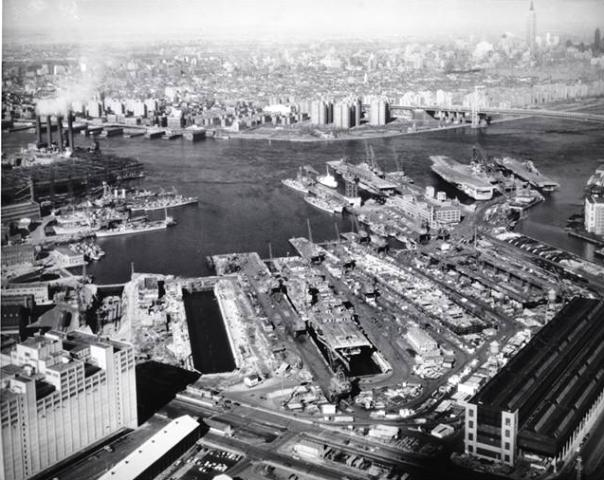
1,500 Cats Too Many
During the war years, many of the Brooklyn Navy Yard cats once again headed out to sea as mascots of the warships, which helped keep the land-based population in check. But ten years after World War II ended, the cat colonies started getting out of hand, forcing the Navy to override the old rules established by Rear Admiral Bowles and set traps.
Bill Wade, a former sailor and journeyman at the yard, would go around springing the traps in order to help save the cats. Twice, he was suspended for disabling the cat traps. He must have done a pretty good job saving them though: By the time he retired in 1965, there were about 1,500 cats on the property.

In June 1966, one week after the government officially closed the Brooklyn Navy Yard, former journeyman Bill Wade reached out to Judith Scofield, who had founded the Save A Cat League in 1957.
The two met with representatives of the Navy and other departments – including Rear Admiral William Francis Petrovic, several enlisted men, representatives from the city health department, and representatives from the Brooklyn branch of the ASPCA — to discuss the fate of the abandoned cats. The Save A Cat League was given three months to find homes for any cats the Navy was able to safely trap.
Just a few hours before the meeting, however, three men reportedly came to the yard and took away many of the cats. Judith and Bill were furious. “What happened to those cats who were taken away just hours before we came and who were those men?” Judith asked. “Are those cats covered by the agreement the Navy made with us…?
According to Judith, many people had expressed a desire to have a Navy Yard cat, and her organization would have had a good chance of getting homes for all of them.
Modern Navy Yard Cats
In 1967, New York City purchased most of the old Navy Yard property. In recent years, the Brooklyn Navy Yard Development Corporation has worked to gentrify the old yard into a light-manufacturing industrial-park with stores, museums and the 580,000 square-foot Steiner Studios. Check out this post on The Weekly Nabe for a quick tour of the BNYDC.
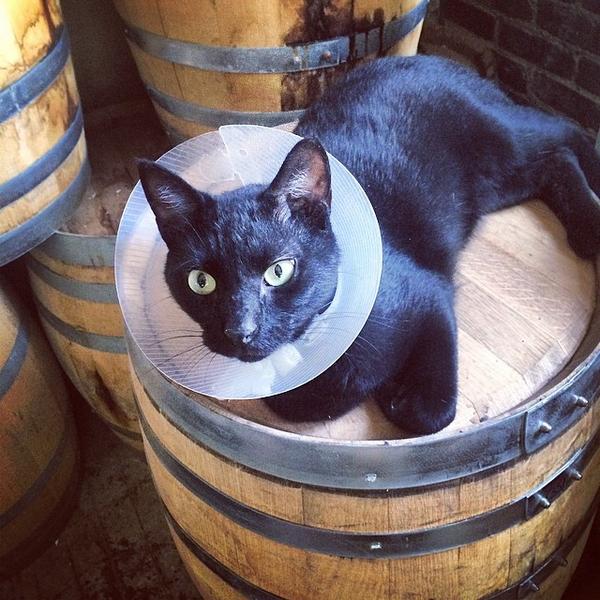
Unfortunately, the former Naval Hospital and campus, abandoned in 1948, and the homes on Admiral’s Row were not part of the deal with the city. Over the years, these areas have become overgrown with creeping vines and downright spooky with their crumbling walls and peeling paint (The Kingston Lounge has some fabulous but eerie interior pictures of the Naval Hospital).
Feral cats, many descendants of the 20th-century ratters, roam the property and make their homes inside the old hospital and Civil War-era buildings, and within the fenced-in cemetery (which, by the way, still has a few hundred bodies that were left behind when most of the grave sites were moved to Cypress Hills Cemetery – click here to take a peek at the old burial grounds).
Today, a small group of women spend their own time and money taking care of the cats by setting up food stations, building shelters, getting them neutered, and taking them to the vet when they get sick. Wouldn’t it be nice if Steiner Studios or some of the other businesses and corporations stepped in to help care for the historical cats at the Brooklyn Navy Yard?


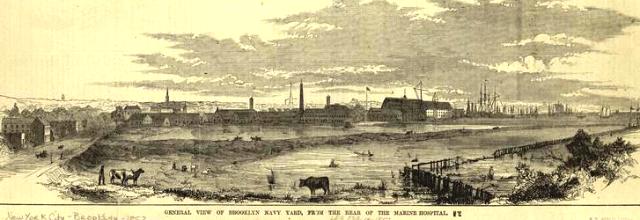

..Awww, I loove this story..!! Amazing..!! What the dogs were ill-equipped to deal with, the cats “pounced on” with relish.., lol..!!! Cats have been reverenced the world over, & throughout human history.., often mysterious, & always fiercely independent, they have nevertheless remained humanity’s companion and, as Lovecraft wrote, our Guardians. I, for one, know this to be true, and am grateful for their presence..!! Thank You for this fabulous bit of Feline/Human history..!!! ~Peace
You’re very welcome — so glad you enjoyed this story! If you love cats as much as I do, you’ll find lots of amazing cats-in-history stories on my blog. Cats worked as mousers for so many places in the 1800s and early 1900s, including the US Post Office, NYPD, fire houses, warehouses, and so on. And of course sailors adored their feline mascots as much as we adore our feline pets today.
[…] This engraving from 1847 depicts the view of the Wallabout Bay, the Wallabout Turnpike (Flushing Avenue), and the Brooklyn Navy Yard from the vantage point of what was then called Washington Park. Today this entire area is occupied by the former Brooklyn Navy Yard. […]